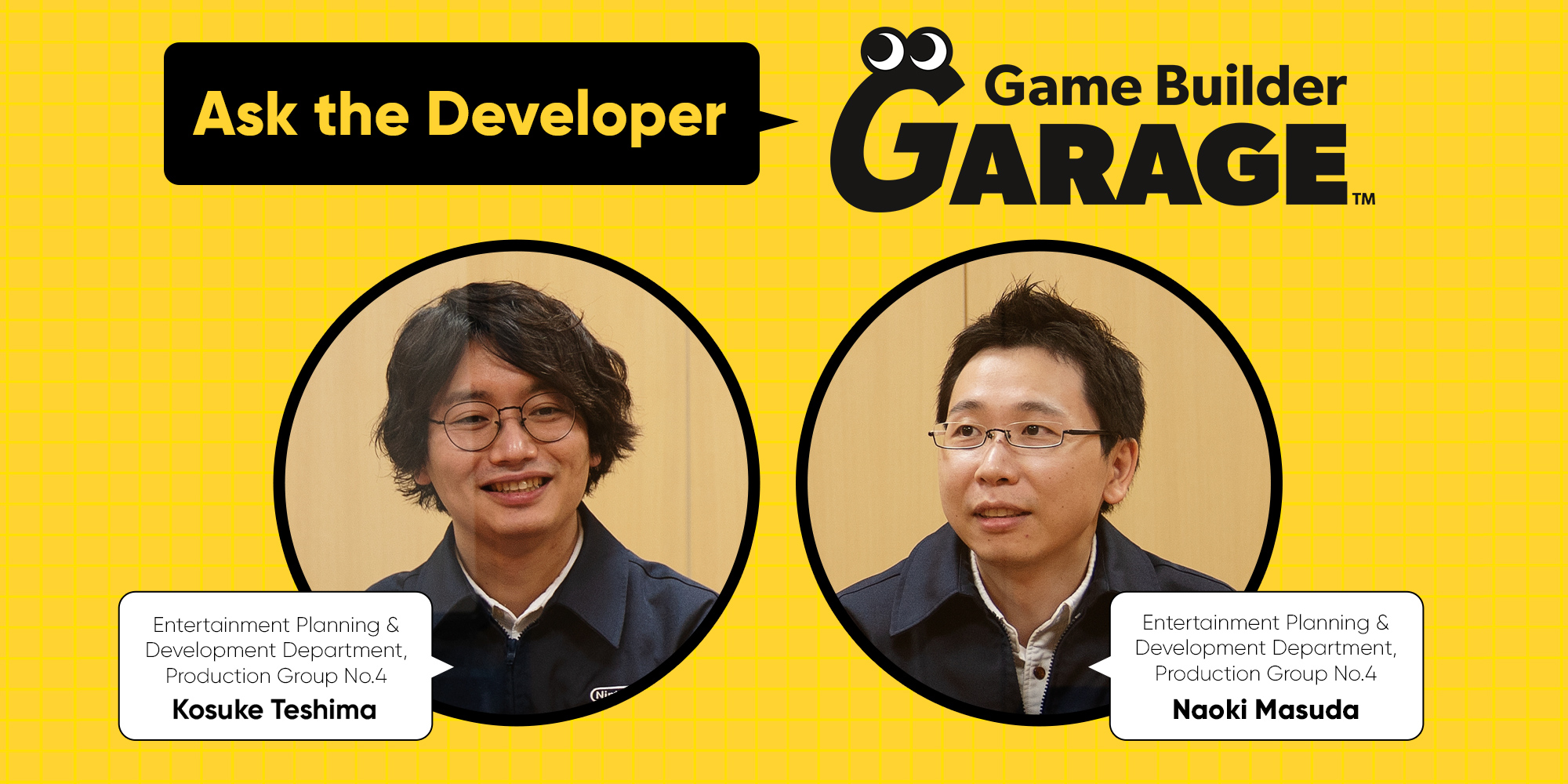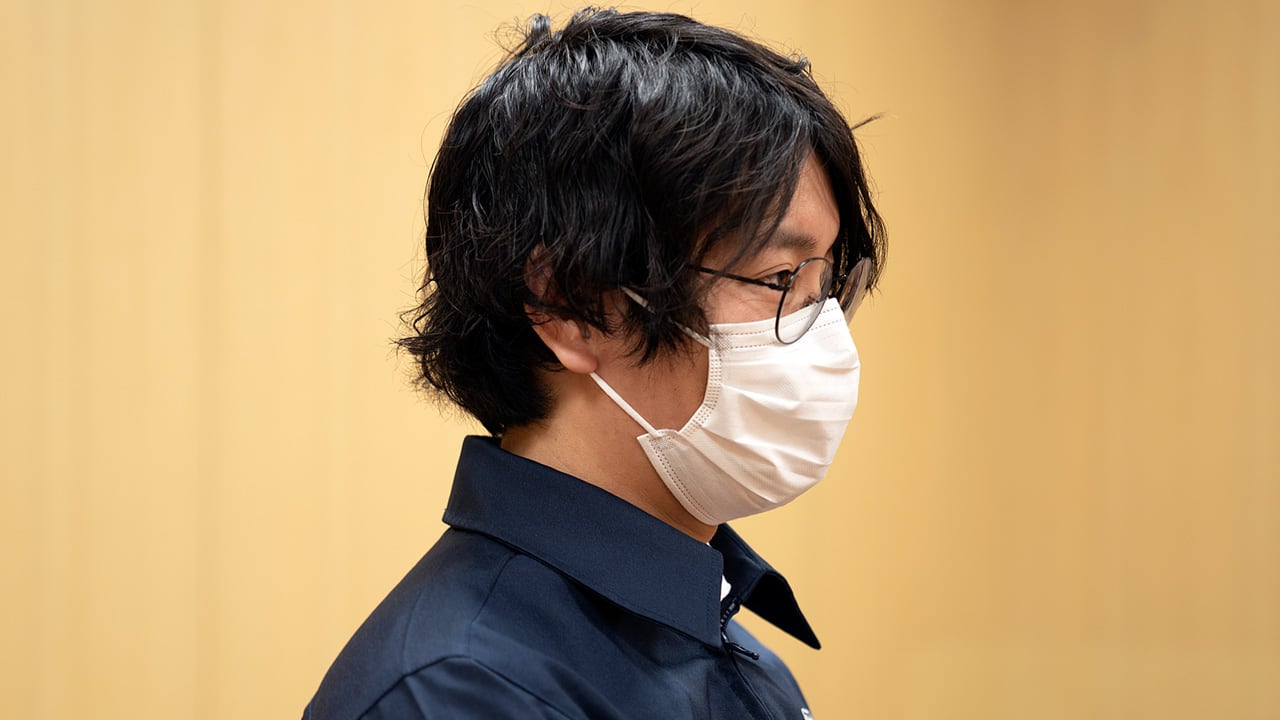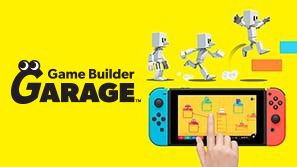
2021.6.10
Content pre-recorded in accordance with current COVID-19 health and safety guidelines. This article has been translated from the original Japanese content.
Encourage players to finish, no matter what
I’ve heard that you are very particular about guiding people to the stage where they can make their own games. How have you tried to let them make it to the end?
Well, of course it's important to have fun making games, but we also wanted people to have the experience of completing each function of the game to the end.
What do you mean by “the experience of completing each function of the game to the end”?
Making a game itself is fun, but completing each step of a lesson offers us a sense of accomplishment. And above all, the moment of completion is already fun. As a developer, I think this is one of the most interesting aspects of programming, and I want our users to experience the same feeling. We heard people say, "I couldn't get to the end with the tutorials” for other programming software. That's why with this software, I wanted to make sure that people would finish making the games in the lessons by repeating the experience of these small moments of completion.
I see. So, you focussed on the feelings of happiness at having completed something.
Something happened to me that inspired me to convey the fun of completing a project and having that sense of accomplishment. I had visited the Nintendo Labo Toy-Con Garage VR hands-on event. We had beginners try out some simple programming, combining the control stick node and the person node to make the person move using the control stick. Then, when the character started to move, there was a big "Whoa!” in the hall, like a boom. We were surprised by this reaction! (laughs)
Things that are obvious to developers might be a surprise to beginners.
Yes. I didn't know that people who had never programmed before would be so impressed by the fact that they could make things work with their own programming! I was really impressed by that experience. I stayed conscious of this experience in the development of this game.

That’s an important realisation.
I myself feel that the experience of doing the work and seeing something slowly come together is interesting. I had the thought to create something that would get people to experience that feeling right up until the end. In programming, there is a learning method commonly known as "sutra copying".(4) It’s an effective method, so we referenced it.
(4)“Sutra copying” is a Japanese phrase for describing a way in which you learn programming by transcribing sample code.
I see, so transcribing the code is a surefire way to get to the end then.
Yes. But one thing that tends to happen in scripting is that it is hard to notice if you enter something wrong, and if there is an input error, the program won't run. Of course, finding out for yourself where you've gone wrong is a very useful way to learn programming, but I thought that this software should use a guided system so that you don't get lost in typing mistakes, pushing that moment of completion to the forefront.
That's why you carefully put in interactive lessons to guide players to the point of completing a game.
Correct. The individual steps of the seven interactive lessons are each designed to be completed in about five minutes, with each lesson gradually moving on step-by-step. By finishing the steps and having these incremental experiences, players will gradually get closer to making and finishing their own game.
But if the player were to stop in the middle of a lesson and time goes by, won't they find themselves forgetting what they learned in the previous lesson and getting stuck?
Each new lesson is based on the content of the previous lesson, but it is not necessary to recall the content of the previous lesson in order to proceed. We tried to avoid situations where you need to recall from memory, so that you can move on if you just simply follow the instructions on the spot.
I see. That’s a relief.
As a matter of fact, there was a question of whether the instructions for each lesson should be increasingly hands-off and vague as the lesson levels increase, to give the users more freedom to understand the programming on their own and for the knowledge to stick. However, it would do no good if we used a hands-off approach and hid the instructions only to have the player give up, not knowing how to make the game.
Even with plastic models, if the instructions are there for only half the model, it will be difficult to complete it. If you don't know how to finish it, it's no fun.
That's right. With this game, too, we paid attention to the structure of the software so that players wouldn’t make mistakes and would be able to complete the games by themselves. That’s the structure we had in mind. Also, between lessons, there are puzzle-like problems called "checkpoints", where you can see that you have understood and completed the task by yourself.



